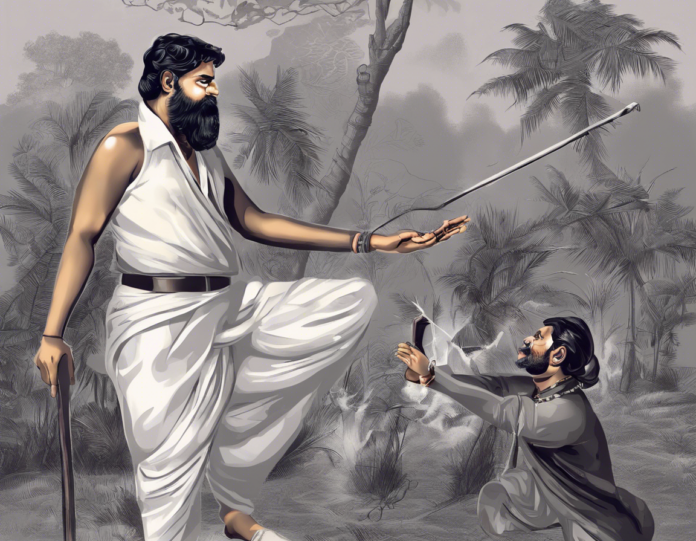The Bharatiya Janata Party (BJP) is one of the major political parties in India, known for its significant influence and widespread presence. Founded in 1980, the BJP has evolved over the years to become a dominant force in Indian politics. In this blog post, we will explore the history, ideology, key leaders, electoral performance, and future prospects of the Bharatiya Janata Party.
History of the BJP
The BJP traces its roots back to the Bharatiya Jana Sangh, established in 1951 by Syama Prasad Mookerjee. The Jana Sangh was a political party that espoused Hindu nationalist ideals and aimed to protect the interests of Hindus in India. Following the emergency period imposed by Prime Minister Indira Gandhi in the 1970s, leaders from the Jana Sangh and other parties came together to form the Janata Party. However, differences in ideology led to the split of the party, with the members of the Jana Sangh forming the Bharatiya Janata Party in 1980.
Ideology of the BJP
The Bharatiya Janata Party is known for its core ideology of Hindutva, which emphasizes the cultural and historical roots of India in Hinduism. The party advocates for the protection of Hindu interests, the promotion of Hindu culture, and the establishment of a Hindu Rashtra (Hindu nation). However, it is essential to note that the BJP also positions itself as a center-right party that focuses on economic development, national security, and good governance.
Key Leaders of the BJP
The BJP has been led by prominent politicians who have played crucial roles in shaping the party’s identity and policies. Some of the key leaders of the Bharatiya Janata Party include:
1. Narendra Modi
- Prime Minister of India since 2014.
- Known for his charismatic leadership and focus on development initiatives such as Make in India, Digital India, and Swachh Bharat Abhiyan.
2. Amit Shah
- Served as the President of the BJP from 2014 to 2020.
- Instrumental in expanding the party’s presence across India through strategic electoral strategies.
3. Atal Bihari Vajpayee
- Former Prime Minister of India and one of the stalwarts of the BJP.
- Led the National Democratic Alliance (NDA) government from 1998 to 2004.
Electoral Performance
The BJP has witnessed significant electoral success in the past few decades, emerging as the single largest party in the Indian parliament in multiple elections. The party’s electoral performance can be attributed to various factors, including its strong organizational structure, effective communication strategies, and popular leadership.
The BJP’s electoral success has been most notable in states like Uttar Pradesh, Gujarat, Maharashtra, and Karnataka, where the party has secured a significant number of seats in both state and national elections. The party’s landslide victory in the 2014 general elections, under the leadership of Narendra Modi, signaled a shift in Indian politics towards a more dominant two-party system with the BJP at the helm.
Future Prospects
As the Bharatiya Janata Party continues to consolidate its position as a formidable political force in India, its future prospects remain closely watched by political analysts and observers. The party’s ability to adapt to changing socio-political dynamics, address key issues like economic development, social welfare, and national security, and maintain its electoral appeal will be crucial in determining its long-term success.
Despite facing criticism from opposition parties and civil society groups over issues such as communal tensions, freedom of expression, and human rights, the BJP has shown resilience in navigating these challenges and maintaining its hold on power. The party’s focus on ideological coherence, grassroots mobilization, and electoral pragmatism will likely shape its trajectory in the years to come.
FAQs about the Bharatiya Janata Party
1. What is the ideology of the BJP?
- The BJP is known for its ideology of Hindutva, which emphasizes the cultural and historical roots of India in Hinduism.
2. Who are some key leaders of the BJP?
- Prominent leaders of the BJP include Narendra Modi, Amit Shah, and Atal Bihari Vajpayee.
3. In which states has the BJP seen significant electoral success?
- The BJP has performed well in states like Uttar Pradesh, Gujarat, Maharashtra, and Karnataka.
4. What factors have contributed to the BJP’s electoral success?
- Factors such as strong organizational structure, effective communication strategies, and popular leadership have contributed to the BJP’s electoral success.
5. How has the BJP fared in recent general elections?
- The BJP secured a landslide victory in the 2014 general elections, under the leadership of Narendra Modi, signaling a shift in Indian politics.
Conclusion
In conclusion, the Bharatiya Janata Party occupies a prominent position in Indian politics, with a strong ideological foundation, popular leadership, and significant electoral success. As the party navigates the complex political landscape of India, its ability to address key issues, adapt to changing dynamics, and maintain its electoral appeal will be critical in shaping its future trajectory. By understanding the history, ideology, key leaders, electoral performance, and future prospects of the BJP, one can gain valuable insights into the evolving political landscape of India.


Recent comments